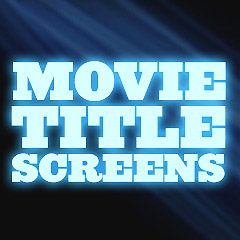
|
Movie Title Screens |
In the early days of cinema, the title screen was usually viewed within the first few frames of the movie, appearing after the studio logo. However, in recent years, the title screens have become increasingly difficult to locate - they can be hidden anywhere within the film's first 10-15 minutes, or they can come at the end of the film. Some movie titles are creatively concealed within a scene or image. Undoubtedly, the most common design found in title screens is white text on a solid black background. Many other pages in
Filmsite have collections of title screens, including
but not limited to these: All-Time
Top Summer Blockbusters, Greatest
Film Franchises (Box-Office), Greatest
Film Franchises (in multiple parts), Highest-Grossing
Films by Genre,
Great War Films, Greatest
Guy Movies of All-Time, Sex
in Cinema, Sexiest
Films of All-Time, and the Pixar-Disney
Animations. |
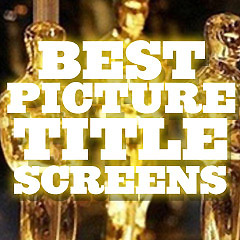
|
Since its inception, the Academy Awards (hosted by the Academy of Motion Picture Arts & Sciences, or AMPAS), have honored one film each year, crowning it "Best Picture." Other names for the title have included Outstanding Picture, Outstanding Production, Outstanding Motion Picture, and Best Motion Picture. The announcement of the Best Picture Oscar winner is often the highlight of an Academy Awards ceremony. Every single Best Picture Oscar award winning film's title screen is here. The Academy Award ceremony that honored each of these films was held in the spring of the year following the film's release. |
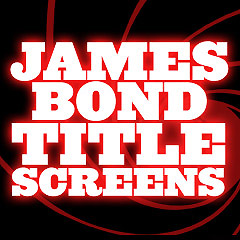
|
This collection includes all of the title screens from the official Eon productions of the James Bond film series. The main fictional character in the British series of spy films has been MI6 agent James Bond (aka "007"), who originally appeared in a series of books by Ian Fleming. It is one of the longest continually-running film series-franchises in cinematic history, having been in on-going production from 1962 to the present. |

|
This collection includes the opening logos of the major film production companies or studios from their inception to the present. They have become some of the most recognizable images or brand distinctions ever created, usually appearing before the regular film titles of the movie release. The history of the evolving logos (or identities) for each studio has been fascinating to watch. Logos include snow-capped mountain peaks, a plane circling the globe, a roaring lion, a shield, a fairy-tale castle, a lady-liberty figure with a torch, and searchlights scanning the sky. |
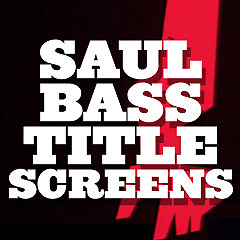
|
The famed graphic designer Saul Bass made his most lasting impact on the movies, with his designs for movie title screens. The normal and staid method for film credits was to perfunctorily present names and titles on cards, or against an unmoving backdrop. He was known as the man who invented the opening credit sequence - he incorporated the title screen into the film itself with striking images. He transformed and elevated static title screens into stylized, moving works of art, first most dramatically with his jagged, twisted and deconstructed forearm that moved (a symbol of heroin addiction) for The Man With the Golden Arm (1955). Bass' first innovative credit sequence was for Otto Preminger's Carmen Jones (1954), using an animated flaming rose. See samples of his many title screen creations (some uncredited). |
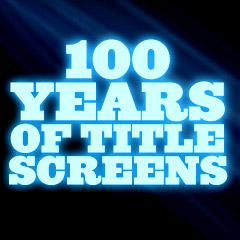
|
Title screens in this section include a memorable collection of choices (from the silent era onward) - Oscar-nominated and Academy Award winning films (and performances), milestone films, important foreign-language entries, memorable films, and more: (1960-1969) | (1970-1979) | (1980-1989) | (1990-1999) (2000-2009) | (2010-2019) | (2020-2029) |
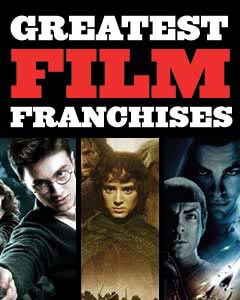
|
Film franchises are multi-picture stories, often including some of the same characters from film to film. Although film series have been around for many decades (e.g., the Tarzan films, the Sherlock Holmes films), film franchises really became a major cinematic fact of life since the 1970s, beginning with the Planet of the Apes series, the James Bond series-franchise and then the Star Wars films. The corporate mentality, that began to look on films as "products," thereby named a series of films as "franchises." The many franchises are categorized alphabetically, by series-franchise title: Film Franchises - Movie Title Screens: |
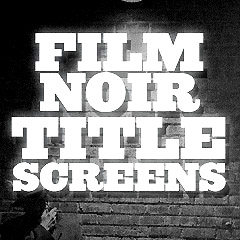
|
A wide range of noir films - many of which are included in this compilation - counter-balanced the optimism of Hollywood's musicals and comedies. Fear, mistrust, bleakness, loss of innocence, despair and paranoia were readily evident in noir, reflecting the 'chilly' Cold War period when the threat of nuclear annihilation was ever-present. The criminal, violent, misogynistic, hard-boiled, or greedy perspectives of anti-heroes in film noir were a metaphoric symptom of society's evils, with a strong undercurrent of moral conflict, purposelessness and sense of injustice. There were rarely happy or optimistic endings in noirs. |
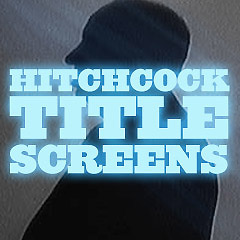
|
English film-maker/director Alfred Hitchcock directed more than 50 feature films in a career spanning six decades. He helped to shape the modern-day thriller genre, beginning with his early silent film The Lodger (1927), a suspenseful Jack-the-Ripper story, followed by his next thriller Blackmail (1929), his first sound film (but also released in a silent version) and the first "British talkie." Hitchcock would make a signature cameo appearance in his feature films, beginning with The Lodger (1927). After 1940, he appeared in every one, except for The Wrong Man (1956). He left England for Hollywood in 1939, where his first American film Rebecca (1940) won an Academy Award for Best Picture. See also: Hitchcock's Greatest Films (illustrated with title screens). He became known as "The Master of Suspense" for the taut thrillers and stories of suspense he directed from the 1940s to the 1960s. He was recognized for his twist endings, signature themes of innocent men on the run, icy blondes, and use of decoys known as "MacGuffins." |

|
Westerns are the major defining genre of the American film industry, a nostalgic eulogy to the early days of the expansive, untamed American frontier (the borderline between civilization and the wilderness). They are one of the oldest, most enduring and flexible genres and one of the most characteristically American genres in their mythic origins. The popularity of westerns has waxed and waned over the years. Their most prolific era was in the 1930s to the 1960s, and most recently in the 90s, there was a resurgence of the genre. |
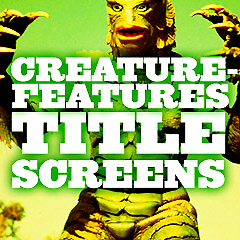
|
Science fiction films took off in the early 50s during what has been dubbed "the Golden Age of Science Fiction Films," pioneered by two 1950 films: Rocketship X-M (1950) and Destination Moon (1950). Many of these films were exploitative, second-rate sci-fi flicks or B-movies with corny dialogue, poor screenplays, bad acting, and amateurish production values. Many other sci-fi films of the 1950s portrayed the human race as victimized and at the mercy of mysterious, hostile, and unfriendly forces, during the Cold War period of politics - with suspicion, anxiety, and paranoia of anything "other" - or "un-American." These moods were reflected allegorically in sci-fi and horror films of the era. Threats and evils surrounded us (alien forces were often a metaphor for Communism), and there were imminent dangers of aliens taking over our minds and territory. UFO sightings and reports of flying saucers or strange visitors from outer space found their way into Hollywood features as allegories of the Cold War. With the threat of destructive rockets and the Atom Bomb looming in people's minds after World War II, mutant creature/monster films featured beasts that were released or atomically created from nuclear experiments or A-bomb accidents. The aberrant, mysterious and alien monsters or life forms that terrorized Earth were the direct result of man's interference with nature. These profitable, low-budget horror/sci-fi/thriller hybrids were perfect for non-discriminating teenagers who attended drive-ins - caring little for character development, plot integrity or production values. Examples of these low-budget 50s films (many of which bordered the horror genre as well as adventure, fantasy, thriller and sci-fi) are included in this compilation. |
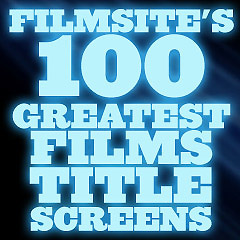
|
Filmsite's selection of 100 Greatest Films in the last century of film-making covers - by conscious choice - a wide range of genres, decades, stars and directors. These 100 choices were limited to English-language, theatrically-distributed, narrative feature films. [That means foreign-language films, documentaries, TV movies and mini-series, and short films were not considered.] Emphasis in these selections was purposely directed toward earlier, more classic Hollywood/American films (and other English-language films) than more recent films, although some recent films (and British films) were included. They are film selections that have undoubtedly left an indelible mark upon our lives and reflect the defining moments of the last 100 years - films that give us pieces of time we can never forget. |